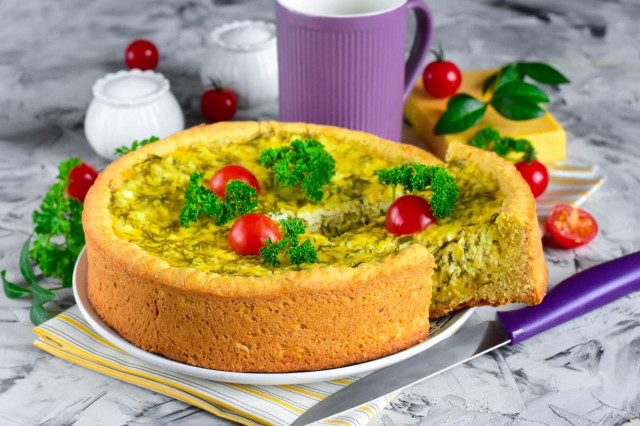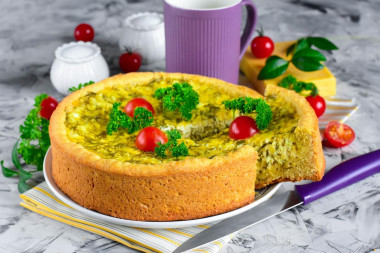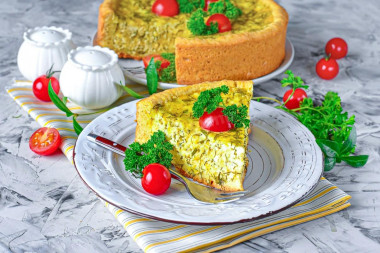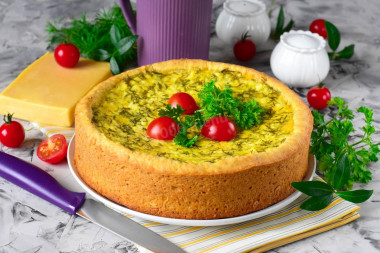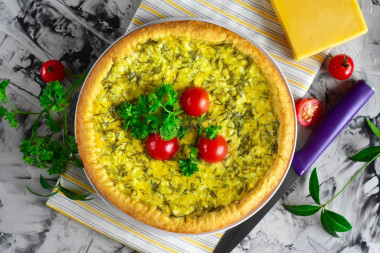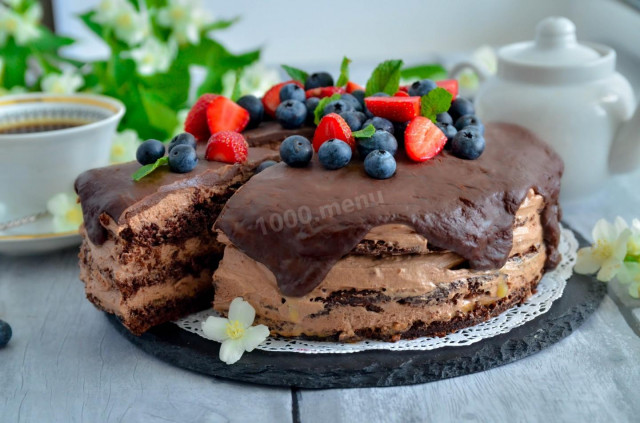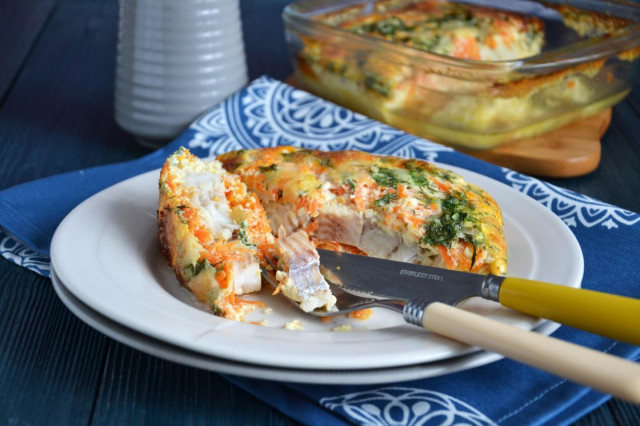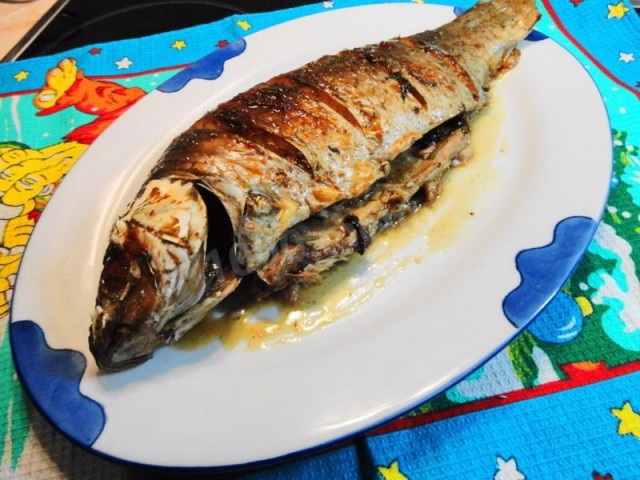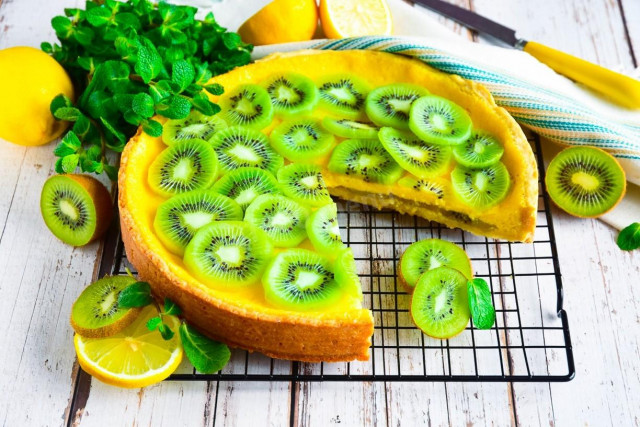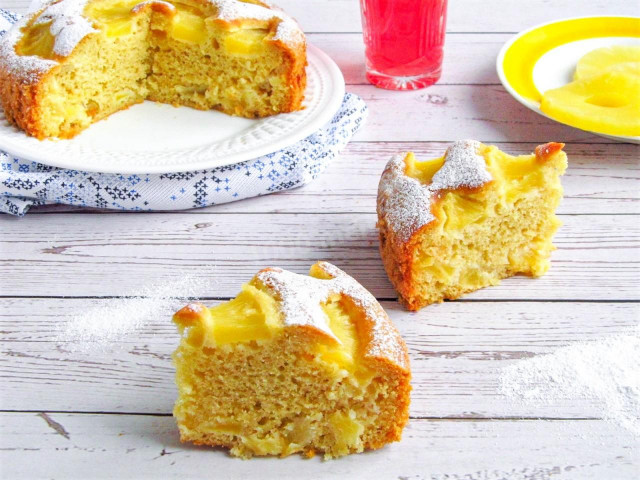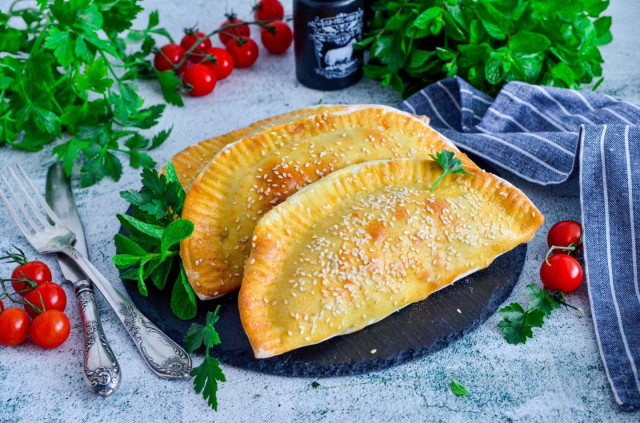Composition / ingredients
Step-by-step cooking
Step 1:
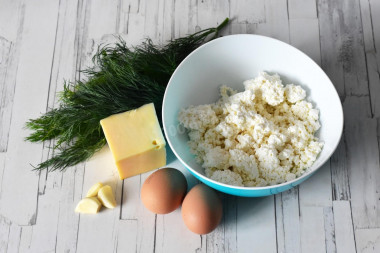
How to make a delicious cake with cottage cheese and cheese? Start by preparing the necessary ingredients for the filling. It is better to take cottage cheese not dry, with a fat content of 5% or higher. The fatter the cottage cheese, the tastier the pie will turn out. Cottage cheese in briquettes will do. Eggs need large selected ones. If the eggs are small, take 3 pieces. Cheese - any. You can use the usual type of Russian, Gouda or suluguni, mozzarella for pizza.
Step 2:
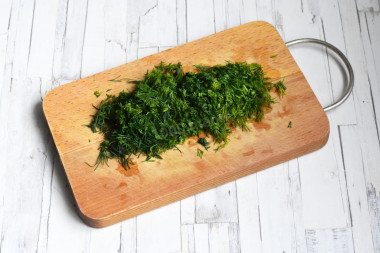
Wash the dill, dry it and chop it finely. In addition to dill, you can take other herbs - parsley, cilantro, green onions or a mixture of different herbs.
Step 3:
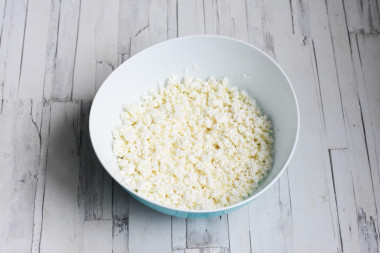
If you have cottage cheese not in briquettes, but in lumps, rub it through a sieve or rub it thoroughly with a fork.
Step 4:
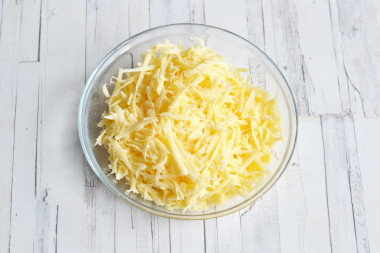
Grate the cheese on a coarse grater.
Step 5:
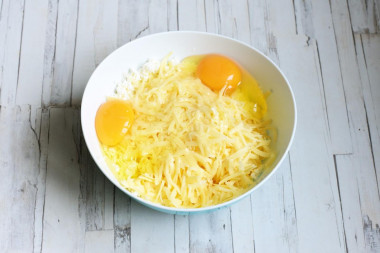
Combine cottage cheese, eggs and cheese in a bowl. Mix everything thoroughly.
Step 6:
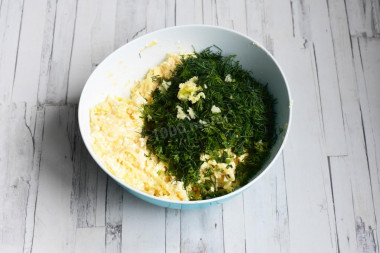
Add chopped dill and garlic cloves passed through the press. If you want the pie to have a milder taste, you can put less garlic or not add it at all. Add salt carefully and only after you taste the filling. Usually there is already enough salt in the cheese and additional salt can spoil the dish, especially since the dough will turn out to be salty anyway.
Step 7:
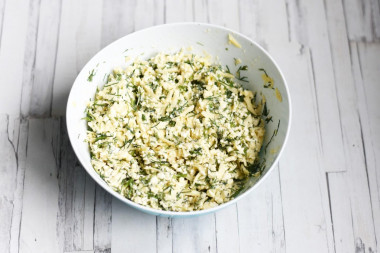
Mix well again. It will turn out a fairly thick mass. The filling is ready.
Step 8:
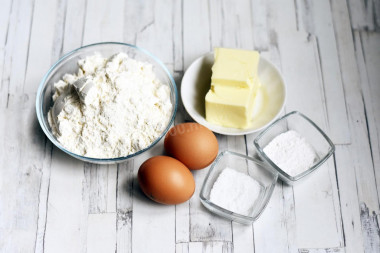
Now start preparing the dough. Take flour of the highest grade, eggs can be of the first category, you can also select. Butter should be at room temperature, so take it out of the refrigerator in advance.
Step 9:
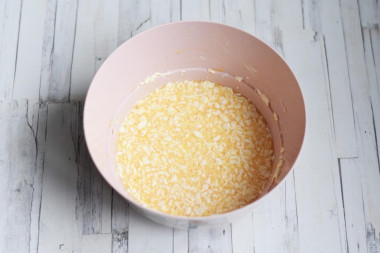
Combine eggs with soft butter and mix. Do not even try to beat until smooth - butter does not combine with liquid ingredients. It will still float on the surface in small droplets.
Step 10:
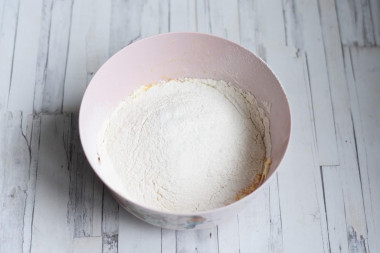
Add the sifted flour, salt and baking powder.
Step 11:
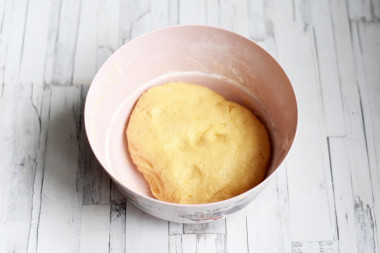
Knead a soft elastic dough. It is not necessary to knead the shortbread dough for a long time, it will come off quickly enough from both hands and dishes. Depending on the type of flour, the size of the eggs, you may need more or less flour. I added another 1 tbsp . l . The dough turns out to be soft, like fluff, and very pliable.
Step 12:
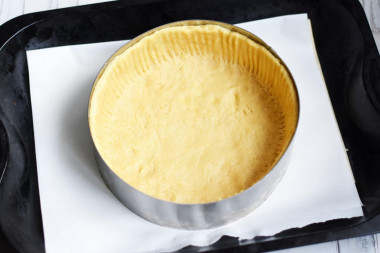
Spread the dough on the bottom and walls of a parchment-lined and oiled split mold or baking ring (Ø 20-22 cm). I have a cooking ring with a diameter of 20 cm. There should be no damage on the dough through which the filling can flow.
Step 13:
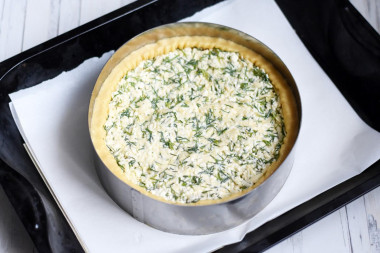
Put the cheese-curd filling on the dough and smooth it out. Bake the pie in a preheated 180 ° C oven for about 45 minutes. The exact baking time depends on the characteristics of your oven and the thickness of the pie. In the middle of the process, it is desirable to expand the pie with the other side so that it is baked evenly.
Step 14:
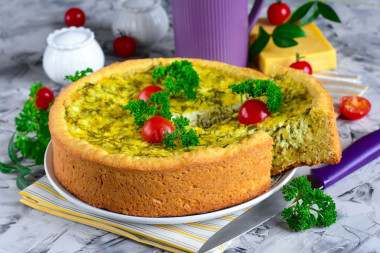
Put the finished pie on a platter and serve it to the table hot or chilled. Enjoy your meal!
Be prepared for the fact that flour may need more or less than indicated in the recipe. Focus not on the amount of flour, but on the desired consistency of the dough. To avoid mistakes, read about flour and its properties!
Keep in mind that everyone's ovens are different. The temperature and cooking time may differ from those specified in the recipe. To make any baked dish successful, use useful information about the features of ovens !
Is it possible to replace baking powder with soda, how to add them correctly so that the baking is lush, how to avoid an unpleasant soda taste and much more, read the article "Baking powder or baking soda - which is better?"
Calorie content of the products possible in the dish
- Chicken egg - 157 kcal/100g
- Egg white - 45 kcal/100g
- Egg powder - 542 kcal/100g
- Egg yolk - 352 kcal/100g
- Ostrich egg - 118 kcal/100g
- Cottage cheese of 40% fat content - 466 kcal/100g
- Cottage cheese of 20% fat content - 233 kcal/100g
- Cottage cheese of 18% fat content - 226 kcal/100g
- Cottage cheese of 10% fat content - 156 kcal/100g
- Low-fat cottage cheese - 75 kcal/100g
- Cottage cheese with sour cream - 260 kcal/100g
- Fruit cottage cheese - 147 kcal/100g
- Soft dietary cottage cheese - 170 kcal/100g
- Cottage cheese "vitalinia" - 64 kcal/100g
- Cottage cheese "morning" ( "danone") without sugar - 91 kcal/100g
- Cottage cheese - 156 kcal/100g
- Dutch cheese - 352 kcal/100g
- Swiss cheese - 335 kcal/100g
- Russian cheese - 366 kcal/100g
- Kostroma cheese - 345 kcal/100g
- Yaroslavsky cheese - 361 kcal/100g
- Altai cheese 50% fat content - 356 kcal/100g
- Soviet cheese - 400 kcal/100g
- Cheese "steppe" - 362 kcal/100g
- Uglich cheese - 347 kcal/100g
- Poshekhonsky cheese - 350 kcal/100g
- Lambert cheese - 377 kcal/100g
- Appnzeller cheese with 50% fat content - 400 kcal/100g
- Chester cheese with 50% fat content - 363 kcal/100g
- Edamer cheese with 40% fat content - 340 kcal/100g
- Cheese with mushrooms of 50% fat content - 395 kcal/100g
- Emmental cheese with 45% fat content - 420 kcal/100g
- Gouda cheese with 45% fat content - 356 kcal/100g
- Aiadeus cheese - 364 kcal/100g
- Dom blanc cheese (semi-hard) - 360 kcal/100g
- Lo spalmino cheese - 61 kcal/100g
- Cheese "etorki" (sheep, hard) - 401 kcal/100g
- White cheese - 100 kcal/100g
- Fat yellow cheese - 260 kcal/100g
- Altai cheese - 355 kcal/100g
- Kaunas cheese - 355 kcal/100g
- Latvian cheese - 316 kcal/100g
- Limburger cheese - 327 kcal/100g
- Lithuanian cheese - 250 kcal/100g
- Lake cheese - 350 kcal/100g
- Gruyere cheese - 396 kcal/100g
- Garlic - 143 kcal/100g
- Dill greens - 38 kcal/100g
- Whole durum wheat flour fortified - 333 kcal/100g
- Whole durum wheat flour universal - 364 kcal/100g
- Flour krupchatka - 348 kcal/100g
- Flour - 325 kcal/100g
- Butter 82% - 734 kcal/100g
- Amateur unsalted butter - 709 kcal/100g
- Unsalted peasant butter - 661 kcal/100g
- Peasant salted butter - 652 kcal/100g
- Melted butter - 869 kcal/100g
- Salt - 0 kcal/100g
- Baking powder - 79 kcal/100g

